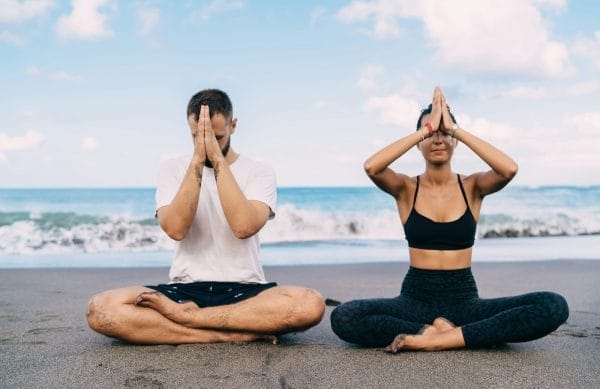Mindfulness: Benefits, Practices, and Its Use for Kids and Teens
Mindfulness has become a buzzword in today’s fast-paced world, often touted as a cure-all for stress, anxiety, and a multitude of other modern-day ailments. But what exactly is mindfulness? At its core, mindfulness is a simple yet profound practice rooted in ancient traditions, primarily Buddhism. It involves paying full attention to the present moment, with an attitude of openness, curiosity, and non-judgment.
This article aims to demystify mindfulness, exploring its definition, benefits, and various practices, including mindfulness meditation and mindfulness-based cognitive therapy, while also touching on its application for kids and teenagers.

Table of Contents
Understanding Mindfulness: A Definition
![]()
Mindfulness, in its essence, is the practice of being fully engaged with the present moment. It’s about noticing your thoughts, feelings, bodily sensations, and the surrounding environment without trying to change anything. This might sound simple, but it’s surprisingly challenging in a world that’s constantly vying for our attention. Mindfulness encourages a reconnection with our experiences, cultivating a deeper awareness that can lead to profound insights and emotional balance.
The Science and Benefits of Mindfulness
![]()
Research into mindfulness has exploded over the past few decades, revealing its potential to positively impact both mental and physical health. Studies have consistently shown that regular mindfulness practice can reduce stress, anxiety, and symptoms of depression. It can also enhance cognitive functions like attention, memory, and processing speed. On the physical side, mindfulness has been linked to improved immune response, lower blood pressure, and reduced chronic pain. These benefits make a compelling case for incorporating mindfulness into our daily lives.
Mindfulness Meditation: The Heart of the Practice
![]()
At the heart of mindfulness is meditation. Mindfulness meditation involves sitting quietly and paying attention to thoughts, sounds, the sensations of breathing, or parts of the body. It’s about observing without criticism; letting your thoughts and feelings come and go without getting caught up in them. This practice can be done anywhere, from a quiet room to a bustling train station, making it accessible to everyone. Here are some steps to get started:
- Find a quiet space and sit comfortably.
- Focus on your breath or a “mindfulness bell” like ambient sounds.
- When your mind wanders, gently bring it back to your focus point without judgment.
- Start with short sessions and gradually increase the duration.
Consistency is key in mindfulness meditation; even a few minutes daily can be beneficial.
Mindfulness Exercises Beyond Meditation
![]()
Mindfulness can extend beyond formal meditation into everyday activities. Here are some simple exercises to incorporate mindfulness into your daily life:
- Mindful Eating: Pay full attention to the experience of eating, noticing the textures, flavors, and sensations of your food.
- Mindful Walking: Focus on the sensation of walking, noticing the feel of the ground under your feet and the sounds around you.
- Mindful Listening: Listen to music or the sounds of your environment with full attention, noticing the various tones and how they make you feel.
These exercises can help cultivate a mindful awareness that enriches your experience of the present moment.
Mindfulness-Based Cognitive Therapy (MBCT)
![]()
Mindfulness-Based Cognitive Therapy (MBCT) is a groundbreaking approach that combines cognitive behavioral therapy with mindfulness strategies. It’s specifically designed to help people who suffer from recurring depression. MBCT teaches participants to recognize and disengage from negative thought patterns that can trigger a depressive episode. Research has shown MBCT to be as effective as medication for preventing depression relapse, making it a valuable tool for mental health.
Mindfulness for Kids and Teenagers
![]()
Mindfulness isn’t just for adults; it’s also incredibly beneficial for kids and teenagers, helping them develop focus, regulate emotions, and build resilience. Teaching mindfulness to children and teens can be engaging and fun, using games and activities suited to their age. Here are some tips for introducing mindfulness:
- Use short, simple exercises to keep them engaged.
- Incorporate mindfulness into activities they already enjoy.
- Be a mindfulness role model; your practice can inspire theirs.
Mindfulness can offer kids and teenagers valuable tools to navigate the challenges of growing up in today’s world.
Frequently Asked Questions
![]()
What is mindfulness?
Mindfulness is paying full attention to what’s happening in the present moment. It means being aware of your thoughts, feelings, and bodily sensations without judgment. It’s about living in the now rather than dwelling on the past or worrying about the future.
How do I practice mindfulness?
You can practice mindfulness by focusing on your breath, doing a body scan (noticing sensations in each part of your body), or paying attention to your senses (what you see, hear, smell, taste, and touch). You can also practice mindfulness while doing everyday activities, like walking or eating, by fully engaging with the experience.
How long should I practice mindfulness each day?
There’s no set time that works for everyone, but many people find that starting with 5-10 minutes a day is manageable and beneficial. As you become more comfortable with the practice, you might want to gradually increase the time.
Can mindfulness help with stress?
Yes, mindfulness can help reduce stress. By focusing on the present, you’re less likely to get caught up in worries about the future or regrets about the past. Mindfulness teaches you to respond to situations with awareness rather than reacting automatically, which can reduce stress.
Do I need to sit cross-legged or chant to practice mindfulness?
No, you don’t need to sit in any particular position or chant. You can practice mindfulness in any posture that’s comfortable for you, whether you’re sitting, lying down, or walking. The key is to be in a position where you can stay alert and focused.
Can mindfulness improve my health?
Yes, practicing mindfulness has been linked to a variety of health benefits, including lower blood pressure, improved sleep, and a stronger immune system. It can also improve mental health by reducing symptoms of anxiety and depression.
Is mindfulness a type of meditation?
Mindfulness is a form of meditation, but it’s also a quality that you can bring to any moment of your day. While mindfulness meditation involves deliberately setting aside time to practice mindfulness, you can also be mindful while doing any activity.
Do I need an app or a class to practice mindfulness?
While apps and classes can be helpful, especially for beginners, they’re not necessary. You can practice mindfulness on your own by simply paying attention to your breath or your surroundings. However, some people find that guided instructions from an app or class can enhance their practice.
How do I know if I’m doing it right?
There’s no right or wrong way to be mindful. The key is whether you’re paying attention to the present moment. If you notice your mind has wandered (which is normal), gently bring your focus back to the present. It’s this act of noticing and returning your attention that builds mindfulness.
Can children practice mindfulness?
Yes, children can practice mindfulness, and it can be beneficial for them too. Mindfulness can help children manage stress, improve their focus, and handle their emotions better. There are many resources and activities designed to teach mindfulness to children in an age-appropriate way.
Conclusion
![]()
Mindfulness is a powerful practice with the potential to transform our lives by helping us cultivate a deeper awareness and appreciation for the present moment. Whether through meditation, mindfulness exercises, or therapeutic approaches like MBCT, mindfulness offers a path to greater mental and physical well-being. By incorporating mindfulness into our daily routines and teaching it to the younger generation, we can all reap the benefits of a more mindful, connected, and fulfilling life.
In a world that often feels overwhelming, mindfulness stands out as a beacon of calm and clarity. It encourages us to slow down, breathe, and truly engage with the here and now. As we continue to explore and embrace mindfulness, we open ourselves up to a richer, more nuanced experience of life. Mindfulness is not just a practice but a journey—one that invites us to live more fully, more compassionately, and more joyously each day.
